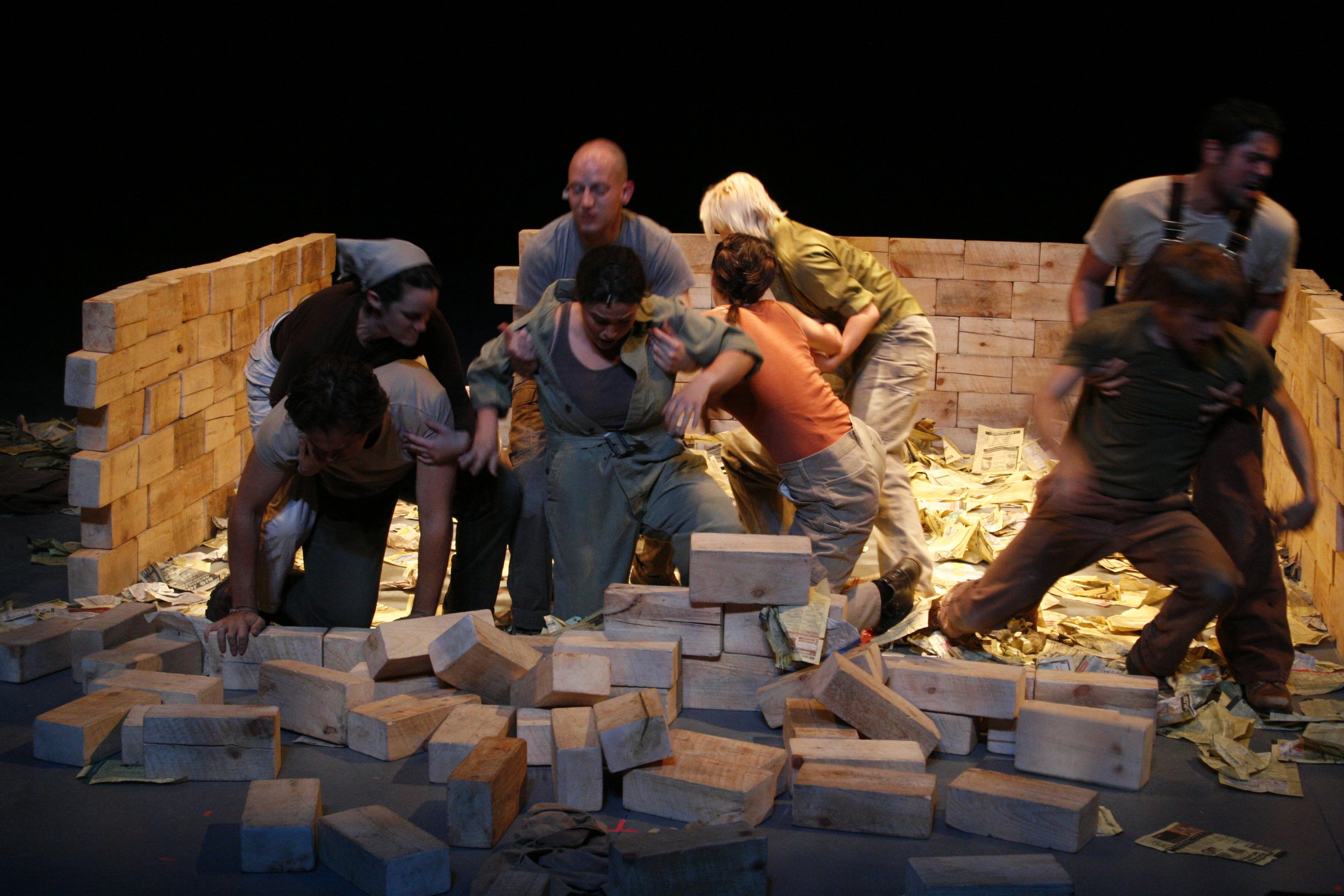





















Time and Motion Study, an experimental music piece for eight performers, takes as inspiration technological culture of the 1920s and 1930s, when Muzak was first pumped over telephone lines to bolster worker productivity. Designed to be like air, or in Erik Satie’s words “furniture music,” Muzak would crescendo emotionally every 15 minutes, reinforcing the workaday energy curve. Time and Motion Study sonically traces the history of background music, deconstructing how it has seeped into modern U.S. culture and influenced daily work rituals.
Frank Gilbreth coined the phrase “Time and Motion Study” for his 1920s ergonomics experiments, in which factory workers’ movements were measured and reordered to increase efficiency. Taylor, along with the machine aesthetic of the 1920s, inspire this piece, in which humans are also micromanaged. Using a groundbreaking performance approach that Meredith Monk has called “one of the most innovative and exciting pieces of musical theater I’ve seen in years”, the eight performers are trained to lipsynch, sing, and coordinate their movements precisely with a dense electronic maquette of sound effects, pop song fragments, and prerecorded text.
Time and Motion Study is the third part in a tetralogy that began with Tone Test (2004), premiered at the Lincoln Center Festival, and written under a Guggenheim Fellowship. The tetralogy is inspired by sound technologies on the verge of collapse (the phonograph, the radio, Muzak, the walkman), and examines how recordings have reengineered the psychological landscape of the U.S.
Time and Motion Study uses samples of the quotidian—standards, top 40, and everyday breathing, humming, and movement—and mixes them with scat, songs-without-words, exercise records and Wagner, all sources that suggest an background orchestra that moves us like Muzak. These sources spin a surreal symbolic web, in which the singers blur in and out of focus, sometimes lipsynching, sometimes singing. At times, everyone sings and moves en masse, at times the performers act independently, performing eight different surreal vignettes, each one coordinated in lock step.
The movement draws heavily on Taylor’s factory studies, exercise videos, and song-and-dance routines, and is being developed through rehearsal techniques innovated in Mass (2006), the second part of the tetralogy. Co-director Jenny Rohn helps develop the theatrical component through workshops in experimental theater techniques. The performers are first rehearsed musically to meld their voices with the sampled collage—which virtually choreographs every movement—then Rohn and Brooke collaboratively develop the movement and theater based on the individual performers contributions and on improvisatory exercises. Drawing on a poor theater aesthetic, the stage setting is minimal, allowing the actors to evoke the music. Scraps of furniture suggest an arena somewhere between a factory and living room. Working collaboratively with the co-directors and performers, the sound engineer gradually fades in and out the sound maquette, in order to create moments of presence and distance with the live and recorded voices. The work uses an established production team of musical directors and sound designers drawn from The Cabinet and the 2004 production of Brooke’s Tone Test at the Lincoln Center Festival.
